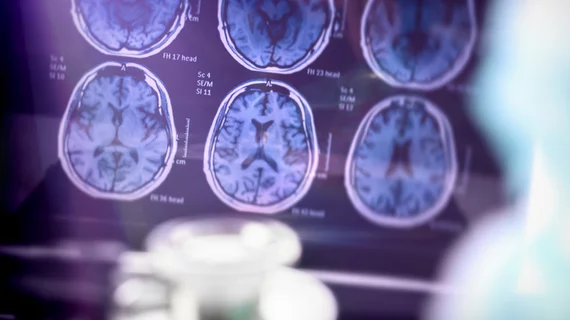MR-guided thermoseeds can destroy cancerous brain tissue
New thermoseed technology shows promise for the future of cancer treatments when used in conjunction with remote MRI guidance, according to research published Wednesday in Advanced Science.
Minimally-invasive image-guided ablation, or MINIMA, uses detailed MR guidance to remotely navigate thermoseeds into cancerous tumors. Once the small magnetic seeds are implanted, they are then guided to the desired location before being heated using an MRI scanner. This destroys cancerous tissues while preserving the surrounding healthy tissue.
The technology was developed by researchers at University College London, United Kingdom. So far, the benefits have only been studied in mice, but the experts are optimistic about its potential for use in humans as well.
“I treat patients with the most common form of brain cancer, glioblastoma. Following surgery, the average survival time is 12-18 months. MINIMA can successfully destroy cancer in a mouse and has the potential to extend survival and limit damage to adjacent brain tissues in patients,” Lewis Thorne, a neurosurgeon at the National Hospital for Neurology and Neurosurgery, in London, and co-authors explained.
The MR-guided ablation technique would allow patients to avoid the toxicity of traditional cancer therapies, as well as a much more invasive open surgical procedure. In turn, this could also reduce recovery times and improve outcomes for patients, the researchers suggested.
To achieve the best results, the authors of the study highlighted the need for precise seed imaging, in addition to having the systems tailored to navigate through tissue within 0.3 mm accuracy. Since MRI is already a readily available and easily accessible diagnostic tool, designing these systems to carry out MINIMA procedures would not be a massive undertaking, the experts suggested.
“As MRI is already used to detect the boundaries of cancers, the seed can be moved precisely to ensure it does not stray into surrounding healthy tissue. As the seed is guided through the tissue it can be heated to destroy the cancer," senior author of the study, Mark Lythgoe, PhD, at the UCL Center for Advanced Biomedical Imaging, in London, said. "This combines therapy and diagnosis into a single device, creating a completely new class of imaging therapy."
You can view the detailed research in Advanced Science.

